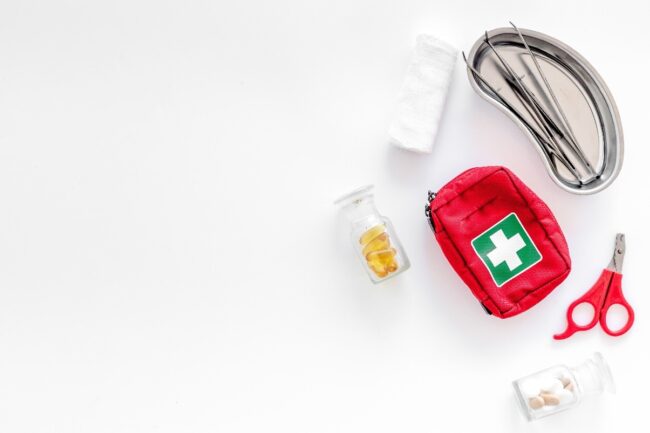When emergencies strike, being prepared can make a significant difference in your pet’s well-being. As pet owners, understanding the basics of first aid can help you respond quickly and efficiently, potentially saving your pet’s life before you can get professional veterinary care. This guide from Dr. Cynthia Maro of Pittsburgh will walk you through the essential first aid techniques that every pet owner should know, including how to create a pet first aid kit, common emergencies, and how to handle them.
Creating a Pet First Aid Kit
A well-stocked first aid kit is the first step in being prepared for any emergency. Here’s what your pet’s first aid kit should include:
- Phone Numbers: Your veterinarian, the nearest emergency vet clinic, and the ASPCA Animal Poison Control Center (888-426-4435).
- Gauze, Non-Stick Bandages, and Adhesive Tape: For wrapping wounds or muzzling an injured animal (never muzzle a vomiting pet).
- Digital Thermometer: To check your pet’s temperature. Remember, a pet’s normal temperature should not exceed 102.5°F.
- Antiseptic Wipes and Hydrogen Peroxide: For cleaning wounds. Peroxide can also induce vomiting, so only administer it if directed by a veterinarian.
- Tweezers and Scissors: For removing splinters or cutting bandages.
- Saline Solution: To flush out wounds or eyes.
- Towel and Blanket: Can be used for warmth, to carry an injured pet, or to restrain a cat.
- Flashlight: To check your pet’s throat, eyes, or hidden wounds.
Recognizing and Responding to Common Emergencies
Choking
Signs: Difficulty breathing, excessive pawing at the mouth, blue-tinged lips.
Action: Look into your pet’s mouth to see if the object is visible. If you see it, gently try to remove it with tweezers. If that doesn’t work, you may need to perform a modified Heimlich maneuver by giving a sharp rap to their chest, which can help dislodge the object.
Bleeding
Signs: Visible wounds, bleeding.
Action: Apply pressure to the wound with a gauze pad. If the bleeding doesn’t stop, keep adding gauze without removing the old layers and seek veterinary attention immediately.
Poisoning
Signs: Vomiting, diarrhea, drooling, seizures.
Action: If you suspect your pet has ingested something toxic, call the ASPCA Animal Poison Control Center and your vet immediately. Do not induce vomiting unless instructed by a professional.
Heatstroke
Signs: Excessive panting, drooling, lethargy, vomiting.
Action: Move your pet to a cooler area immediately. Apply cool (not cold) water to their body and offer small amounts of water to drink. Contact your vet right away.
Seizures
Signs: Collapsing, muscle stiffness, loss of consciousness, jerking movements.
Action: Do not restrain your pet. Remove any nearby objects that could harm them during the seizure. Time the seizure, and once it stops, keep your pet warm and quiet while you contact your vet.
While first aid basics are a crucial skill for every pet owner, remember that these techniques are not substitutes for veterinary care. They are meant to stabilize your pet until you can get professional help. Always consult with your veterinarian immediately following any first aid measures to ensure that your pet receives the appropriate care and follow-up treatment. Being prepared can truly make a difference for your pet’s health and safety.
Author
Dr. Cynthia Maro – Integrative Veterinarian, Cynthia Maro, DVM, CVA, CAC, VMRT, VNAET
